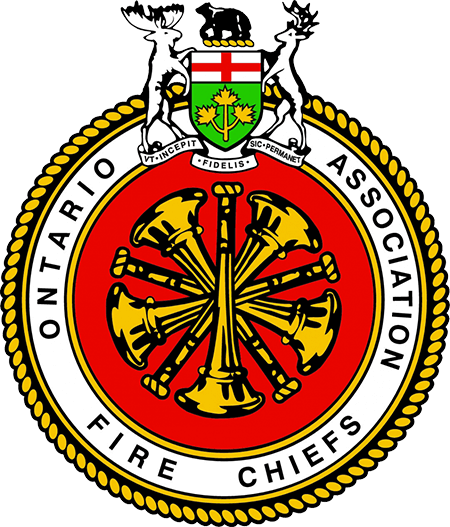Electrical
Our homes are filled with appliances and electronics, but most of us do not think of them as potential fire hazards.
Six Common Causes of Electrical Residential Fires

1. Power cords and bars
Power and extension cords that are pinched, pierced, bent or otherwise damaged do not look very threatening, but they present serious fire and shock hazards. To prevent a cord or power bar failure from catching you off guard make sure you do the following:
- Keep power bars and cords away from moist or wet environments. Keep weather-proofing covers closed on all outdoor outlets.
- Make sure there is enough space behind couches, bookcases, beds, desks and countertop appliances to ensure plugs are not pushing against walls, as this can cause damage.
- Keep cords away from carpets. Running a cord under a carpet may keep it out of sight, but it also keeps it from properly cooling and makes it easy to damage by foot traffic or furniture.
- Keep cords free and clear of combustible materials. Do not place boxes or furniture on the cords either.
- Keep animals away. Do not let your pets or mice chew on cords.
- Inspect regularly. Check for nicks, damage or signs of overheating at the plug connections. Replace damaged cords. Never patch power and extension cords.
- Use as intended. Extension cords are classified as temporary wiring. Do not drape wiring over nails or affix extension cords to walls to create an extra outlet. Instead, get a permanent outlet installed by an electrician. Avoid long runs and daisy chaining multiple cords together. A heavy duty cord is always a safer bet.
2. Appliances 
Dishwashers, refrigerators, toasters and dryers are all common household appliances that can cause fires due to manufacturers’ defects or misuse.
- Dishwashers: The heating element can be defective and water infiltration can cause circuit board failures.
- Refrigerators: Compressor components and wiring can fail.
- Toasters and other small appliances: Circuit boards and electrical contacts can fail. Food can catch fire during use or afterwards if left in toaster.
- Dryers: Thermostats can fail, allowing the dryer to over-heat. If the main heating element fails, it can send molten metal into the drum, igniting your clothes. Always empty lit traps and avoid using the dryer if you are leaving the house.
Other tips:
- Register your appliances. If there is a manufacturer’s defect, you will automatically be made aware of any recalls. Sign up on Health Canada’s Recalls and Safety Alerts Database to get email alerts for your products.
- Unplug it. Not only should you be disconnecting your kettle, coffee maker and toaster when you go on vacation, you should also unplug them whenever they are not in use. Even when your appliance is not on, the cord is still energized when plugged in. This will also save energy.
- Stay close when appliances are in use. People often run their appliances overnight while they are sleeping or out for the day. Although these times may be more convenient, they pose a possible threat to your safety! If you are home and awake when an issue occurs you can detect danger, escape to safety and call for help much more readily. And, of course, working smoke alarms are a critical safety precaution.
- Get your dryer cleaned by the pros. Call in a company that will clean your dryer interior and exhaust ductwork. You would be surprised how much flammable material (lint) can build up in there.
3. Electronics 
Lithium ion batteries that power our gadgets cram a lot of power in a very small package. When they fail (usually due to damage, improper charging or defect) their high-energy density can cause an explosion with a fire that can be fierce and spread rapidly. Faulty circuit board components can fail and catch fire, too. To ensure your safety, follow these steps.
- Charge electronics according to manufacturer’s instructions. Keep your laptops, tablets, cell phones and wearable electronics from becoming fire hazards by charging them with the right charger in the right setting. Aftermarket chargers should be selected with care.
- Unplug it. Remember, when the cord is plugged into an outlet, it is energized even if the device is off. It’s better to disconnect and be safe, especially when sleeping or when leaving the room or house.
4. Stoves and ovens 
Fires on cooking appliances are caused more often by user error than by manufacturer defects. A few basic tips we recommend you implement as house rules in your home:
- Stay in the kitchen when you’re cooking. Unattended cooking is one of the most common causes of household fires.
- Do not overuse the self-cleaning feature. It uses temperatures greater than 900°F to burn off particles – much higher than anything used for cooking. When using it, keep the cooktop and storage drawer under the oven clear so the extreme heat does not melt or ignite combustibles.
5. Exhaust fans
 Bathroom and laundry room exhaust fans are another common source of electrical fires. Dust on a fan that has not been cleaned is an excellent fuel source for a fire, should one break out due to a fan malfunction. Sometimes it’s unclear that the fan has caused a fire inside the ceiling space. An ignited plastic fan grille can drip down and set fire to bath mats, clothes and other flammable items.
Bathroom and laundry room exhaust fans are another common source of electrical fires. Dust on a fan that has not been cleaned is an excellent fuel source for a fire, should one break out due to a fan malfunction. Sometimes it’s unclear that the fan has caused a fire inside the ceiling space. An ignited plastic fan grille can drip down and set fire to bath mats, clothes and other flammable items.
- Check for heat. Feel the plastic grille while the fan is operating. If there is a lot of heat radiating from it, you may have uncovered a problem.
- Open and dust it. This is probably the easiest way to see if there is a problem. After removing the dust, examine the fan for signs of overheating such as discolouration or melting of plastic components around the motor. If you detect any signs of overheating, stop using the fan immediately and call a professional to replace it.
6. Aluminum wiring
Aluminum wiring connections have been found to have a very high probability of overheating compared to copper. The wiring expands when heated and, over time, the expanding and contracting can cause the connections to loosen. A loose connection can cause arching between the wires, which can cause a fire in your home. The arching often occurs behind a light fixture or receptacle making it difficult for the homeowner to tell a potential fire is occurring.
- The best solution is to re-wire your whole house with copper wiring. However, we recognize this can be very expensive.
- “Pigtailing” is another method, which involves splicing a short length of solid copper wire to each aluminum end. The copper wire “pigtail” is then connected to the circuit breaker, switch or receptacle. Problems arise in home improvement projects when improper devices, such as receptacles, are used that are not compatible with aluminum wiring.
- Aluminum wiring is safe when the connections are maintained every couple of years. It’s recommended to have a licensed electrician check all of your connections.
